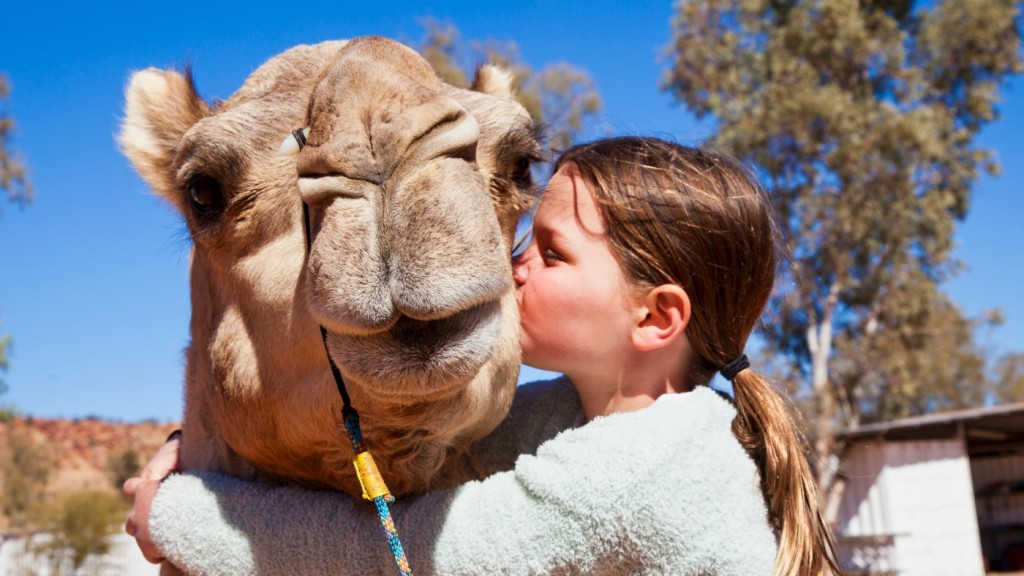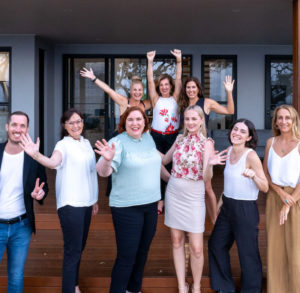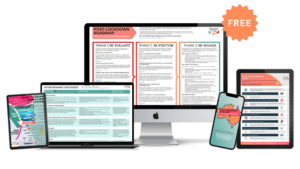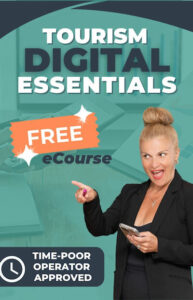Packaging as a Growth Strategy
Tourism businesses, small and large, can gain a competitive advantage by working with partners to create irresistible travel packages. These partners can include businesses that help to distribute your product like online travel agents, retailers and wholesalers and other local businesses.
Working with other local businesses to create a new package is a strategy to create increased appeal for your ideal customer and to make it easier for your potential guests to understand more about the experiences in your destination and ultimately to commit to your destination and book with you. The package should be designed to improve the customer experience, increase the customer spend and length of stay and increase revenue.
Packaging is not a new concept, is available to all sizes and types of tourism businesses and thanks to the digital age is a strategy that can be more easily implemented by using the resources available on the internet.
In this post, we’ll explain the basics of creating travel packages to improve your product appeal and conversion and to benefit your local partners and your destination.
What is a package?
Creating travel packages can be defined as a combination of two or more products, presented as a single sale, so the customer gains an advantage compared with buying the items separately.
You do this by partnering up with another business or businesses to develop a package. The package must be designed around your customers’ needs and interests so that it is instantly appealing to them. By this we mean you’ll need to create a package that is people and market-oriented. It could be accommodation and a restaurant deal, a tour with an added bonus of an attraction visit, discount accommodation pre or post an event combined with event tickets.
The opportunities are only limited by the product available and your imagination.
What are the steps involved?
Firstly, identify what your business needs are, for example, you need more weeknight bookings, longer stays, more low season tour sales. Be clear about what the business driver is for you?
Start by writing down a list of businesses that can help you do that. It might be an activity, a transfer or even a business in a neighbouring region.
Use the internet and your personal networks to source potential partner businesses. Do your research online and find the components you’re interested in.
Learn what NOT to do.
Your aim is to produce a better experience for the customer and the business arrangement needs to be mutually beneficial for it to succeed, so you may need to soft-sell the concept to the other party and you’ll need to spell out benefits for each party (What’s in it for ‘me’?)

Who should you work with?
Appropriate partner selection is key, not only should their product appeal to your target audience, but they should have similar business principles and values. It helps if you have an existing relationship with them, but it is not essential.
In the training workshops that Tourism Tribe coaches deliver in regions, when we are talking about packaging, the benefits and steps to create packages, often operators walk out of the workshop with a commitment to explore the development of packages together, yet they hadn’t met previous to attending the workshop!
Some other types of businesses you may like to consider could include>
- Other tourism business – accommodation, attractions, tours, events.
- Other services – transport, parking
- Food and beverage outlets
- Educational organisations
- Clubs and groups – sporting, hobby
Development of your package
Once you’ve selected the components of your package and got a basic agreement with the players that will be involved to proceed, you can create and map out the detail of the package.
You’ll need to consider such things as;
- What is it called?
- What are the inclusions?
- Why is of value and more appealing for your customers?
- What does each component cost so you can accurately price it?
- Price it clearly, making sure all elements including possible commissions are included in the overall costing. (Do not discount to a point where you reduce profits and/or quality.)
This step is a key part of the process as the ‘finer’ details that you ‘define’ now will make your package stand out from the crowd. You should then develop a sample itinerary and test it yourself, especially if it includes drive times.
Picture the customer as they undertake the package and progress through the variety of inclusions. Critically assess if they make sense and are they likely to appeal to the same demographic?
You could ask your local tourism organisation and visitor information centre for their opinion and feedback in the development stage.
A sample package
 Package name : Escape and adventure package
Package name : Escape and adventure package
Inclusions : 3 nights luxury tent accommodation, 1/2 day Kayak adventure, 2 hour “Camel Trek” and dinner for 2 at Cascade Waterfall restaurant.
Price : A$700.00 per person, twin share
Promotion methods : Websites, CRM, Instagram
Timing : May-August
You may also like to retain a little flexibility to maximise the appeal.
Defining the operational process
Now that you have the package defined, the next step is critical, as they say, the devil is in the detail. So, consider the following;
- Who takes the bookings?
- How will you manage the inventory?
- Who takes the payment; and what are the agreed terms of funds transfer?
- Who handles any complaints; and what is the process?
- Are there any “block out periods”?
- Ensure ALL staff are well trained, aware and well informed about the package
Next, you’ll need to plan how to take it to market? Who is going to do what and when?
Package promotion
Carefully consider the timing of the release of the package and you’ll need to plan well in advance, allowing adequate time for promotion and booking. (Don’t forget to incorporate your average booking lead times.)
Don’t just promote the package when you launch it, you should consider ongoing promotional opportunities for advertising e.g. lead up to local events, holiday seasons.
Make sure your local visitor information centre is aware of the package.
Develop the promotional detail of the package.
This may include;
- An itinerary, make sure it’s available on all partners’ websites and downloadable as a PDF
- Mutual online listings, including content and imagery eg photos and videos that specifically match the experiences
- Combined displays in region and at the visitor information centre
- Joint logos or branding could enhance the promotion and demonstrate the professionalism behind the package
Document the package and the operational and promotional processes. If you set the rules of engagement up early it may save you grief in the long run.
Review and refine
This last step if often forgotten and is vitally important. Listen to your customers and watch your online reviews to gather feedback. It is important that you deliver on your promise. Be flexible enough to adjust your package to meet consumer needs, you may even consider adding a new product to your package to capture new enthusiasm.
So, there you have it, our 6 steps to package creation. Sounds easy when you read it in this article and it is, but it takes thought, relationship building, attention to detail, planning and a very good understanding of your ideal customer.
This Tourism Tribe tutorial includes helpful steps to assessing your customer’s needs by developing customer personas. It is highly recommended as an exercise before you start designing an innovation package with your partners.
The Tourism Tribe community is fortunate to include some very experienced industry specialists and industry operators who can assist you in developing experiences, packages and working with the distribution system.
If you’d like to connect with a Tourism Tribe expert to assist you, just chat with our team on the online chat.




